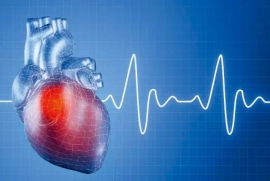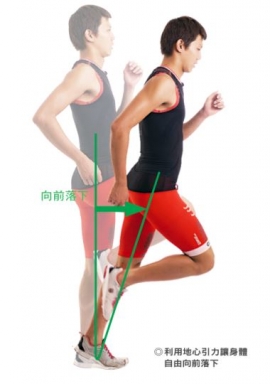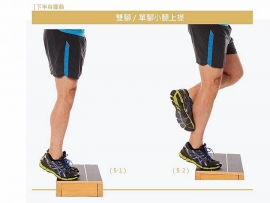在《Anatomy for Runners》书上说到:
We know that running demands we generate large force. And we need to make smarter decisions in ourneuromuscular controlto avoid instability. Muscular control is your first and best line of defense.
However, we often forget that muscles only turn on and off in very precise amounts when told to by the nervous system. The nervous system allows you to adjust your force.
在跑步的过程中,我们需要让神经肌肉控制中心来执行敏锐的决定,以避免身体失去平衡。而别忘了,肌肉只有“开”或“关”,但我们的神经系统确可以精密的控制肌肉,予许你来调整力道。
It’s the reason you can catch an egg without crushing it. You don’t go from completely relaxed to full contraction each and every time you move, so the brain’s ability to coordinate and stabilize the muscular force results in astate of dynamic stability.
为什么你拿鸡蛋时,鸡蛋不会被你捏碎,因为大脑有协调与稳定肌肉的能力,最后产生出动态平衡的状况。
书中有提到,决定我们关节位置与身体定位是综合了三个主要资讯来源“前庭系统(Vestibular System)”、“视觉(Visual)”与“本体感觉(Somatosensory)”:
■ Vestibular System (inner ear)– If you are standing still, inner ear fluid is still. If you turn your head suddenly, the inner ear fluid swirls. This information goes to your brain to help determine acceleration and change in position.
■ Visual– We use your eyes to orient our head and tunk and let us know which way is “up."
■ Somatosensory– You “feel" the ground. You have sensory receptors in your skin that allow you to feel joint position, light and deep pressure, vibration, heat, cold, etc. This sensation goes a long way to improve your tactile feedback to hep you remain stable.
这三个来源相互的交谈与微调来控制你身体的位置与定位,当这三者的竟见都一致同意时,大脑在取得明确的讯号下,便可以做出合适的决定。但若他们意见分歧时,大脑就会感到困惑了。比方说,若你停下,你的眼睛跟本体感觉告诉你“我已经停下来了”,但你的内耳液(Inner Ear fluid)依然打旋(Swirl)着 – “不同意" ,你就会感觉到头晕(Dizzy)。
但为何你闭上眼睛时,单脚平衡就变的更加困难呢?大部份的人都是以视觉为主,高度依赖眼睛来发觉他们的空间中的位置,但问题在于视觉的反应缓慢(Slow):
You need to see information process it in the visual part of your brain, then send a signal to the part of your brain that controls motion to make a correction.
(先从大脑中负责视觉的区域处理资讯之后,再将资讯传送到大脑负种动作的区域来进行控制。)
但本体感觉神经(Somatosensory Nerve)比起其它型态的神经将资讯传达到身体的速度更快,接收到感觉器的讯号时可 直接传给运动单元进行动作,达到更为迅速的"微调"。
Somatosensory nerves are hardwired to transfer infomration through the body faster than any other nerve type. There is a direct rely between the sensory and motor reflexes both inside and outside brain. Fast info in equals fast info out.
This results in rapid “microcorrections" of position.
看个例子,像是滑雪、冲浪、滑板的人,他们藉由脚上踩的板子将资讯立即的传达给身体,身体可以在短时间内进行姿势的调整,并在每一次的训练中,不断的进化身体的感觉非改善本体感觉神经系统。
If you look at skiers, surfers, skateboarders, white water padllers – they all have something in common – they need to make positional corrections very quickly 0 faster than they can see and adjust.
Each and every time they practice their sport they are refining their position sense by “feeling" where the body is. They consistently train and improve their somatosensory system.
但你要如何训练本体感觉神经系统呢?
Correcting imbalances is all about movingsmarter, notstronger. You should never attempt high intensity strength and plyometric exercise until you have mastered specific stabilization of the parts.
若直白一点的翻译上面这段话就是“不要还不会走就想要飞”,在还没能熟悉掌握动作的稳定度前,不应该尝试高强度肌力或是增强式的训练。为什么呢?
Unstable levers cannot tolerate high loads. If you can’t generatespecific force from the right musclesto stabilize against there loads, the body compensates.
(不平衡的槓桿是无法承受高负载的。若你没办法由正确的肌肉来产生特定的力量来抵抗负重时,身体就会产生代偿。)
Athletes develop poor movement stills because they don’t know any better. Simple addingmore volume, more intensity, and more challenge to runners with poor local control is about as effective as drunk driving.
(运动员会发展出不佳的动作是因为他们不知道有更好的方式。所以在不良的身体控制状况下,不断的提升训练量、强度与挑战,这种方式就像是酒驾。)
至于训练方式,可以参考《Anatomy for Runners》书上的后半段,有机会山姆伯候再来提啰,但书上讲的观念真得浅显易懂,是本不错的书。
文章来源:山姆伯伯工作坊



